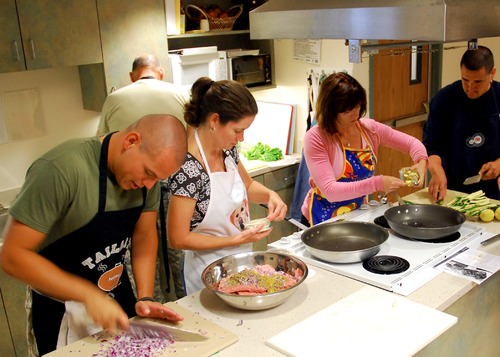1.3 ASSIGNMENT: Science Blog: Evidence of Reactions (Due January 25)
ASSIGNMENT: Science Blog: Evidence of Reactions (10 points)

This Week's Science Blog Topic: For this week's blog entry, read the information below, watch the video, and answer the questions that follow.
A Delicious Reaction

Many synthetic chemists call the act of making new molecules “cooking.” How appropriate! When you cook food, a whole array of chemical reactions are occurring. Chemical reactions are all around us. Cooking food is one category that affects all of us everyday. For example, carbon dioxide is produced by yeast in bread, allowing the dough to rise. When the dough is placed in an oven, the heat causes chemical reactions to occur.

The holes in the bread are caused by air bubbles produced by the yeast [Figure2]
In the kitchen, ingredients lead to finished dishes; however, in the lab, reactants lead to isolated products. Chemical reactions always lead to chemical changes – the creation of new chemical compounds!Watch a compilation of some exciting reactions:
- List and describe in detail three ways you know a chemical reaction has occurred.
- A change in melting point is sometimes identified as evidence of a chemical reaction. Can the same be said of a change in freezing point?
- Why might plunging a vegetable into boiling water cause it to become bright green in color?
- Consider your answers for question 1 above. Which of the observations are related to energy transfer in the chemical reaction and which are related to the formation of new products?
Blog Guidelines:
- Each blog post should be at least one paragraph (3-5 sentences minimum).
- Use complete sentences, proper grammar and punctuation.
- All posts/comments must be respectful. Vulgarity or rudeness will result in school disciplinary action.
Instructions:
1. Find the Blog Menu block. Click Add an entry about this course.
You can enter a title for your post and then write your post. You can insert images or links to help explain your ideas. When you have finished, click Save Changes.
2. Get link to your course blog
After you save your post, highlight and copy (cntl +c) the url at the top of the blog. You can also get the link by going to the Blog Menu block and clicking View my entries for this course
2. To submit in Moodle, Click Add Submission.
3. Paste your blog URL into the submission box.
4. Click Save Changes to submit your assignment.
Are you interested in knowing how to read and comment on other students' science blog posts? Just go to the Blog Menu and choose View all entries for this course. You can add comments and also read comments others have left on your posts.
After you have completed this assignment, it will be marked as complete with a checkmark after it has been graded by the instructor.
